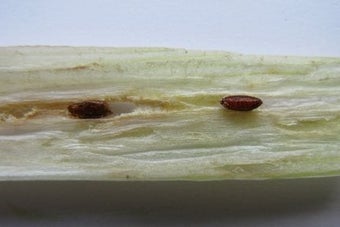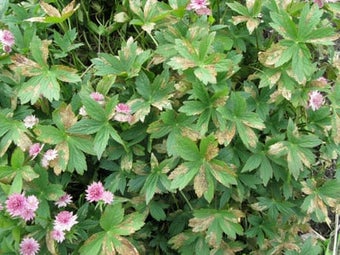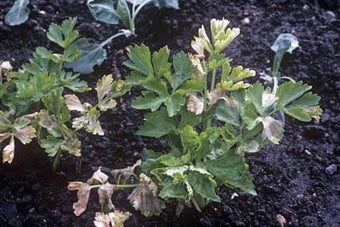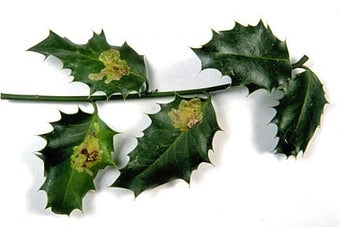
Quick facts
Common name - Beet leaf miner
Scientific name - Pegomya hyoscyami
Plants affected - Beetroot, spinach beet, and Swiss chard
Main symptoms - Blotchy leaf mines (pale areas) on leaves
Most active - April to September
What is beet leaf miner?
Beet leaf miner adults resemble small house flies. The larvae cause plant damage by tunnelling into leaves of susceptible plants and eating the internal tissues.
The fly belongs to the family Anthomyidae, it is a diverse group of flies with over 100 species Britain. Whilst a few are leaf miners others feed on roots such as the cabbage root fly . Most do not damage garden plants. More information on this fly family is available from the .
Nearly 900 other insects, including some beetles, sawflies and moths create leaf mines as larvae, more information about some for these insects can be found at .
Symptoms
Beet leaf miner larvae tunnel inside leaves creating large irregular blotch-shaped mines. The damaged areas may be pale green initially but mined parts of the leaf soon turn brown and shrivel. Early summer damage is potentially the most harmful to the plants as crops may be set back, damage on more mature plants may have less impact although may render leafy crops inedible.
Management
Leaf miners can be part of a healthy balanced garden, most species will have natural enemies including parasitoid wasps. Birds such as blue tits can sometimes open mines to consume the larvae within. On plants where leaves are to be consumed leaf miners can be difficult to tolerate.
Growing susceptible plants under insect barrier netting will prevent female flies laying eggs on the foliage. However, crop rotation must be practised otherwise adult flies may emerge from overwintered pupae in the soil and be trapped under the netting.
On uncovered plants removing mined leaves or squeezing the mined areas to crush the maggots may give some control. A careful search may also reveal the white eggs which are laid in small groups on the underside of leaves. Early summer damage is potentially the most harmful to the plants.
Biology
The beet leaf miner has two or three generations between April and September. The females, which resemble small house flies, lay small batches of eggs on the foliage of beetroot, spinach beet and Swiss chard. Larvae feed on internal leaf material and the fully grown larvae go into the soil where they spend the winter as pupae.














